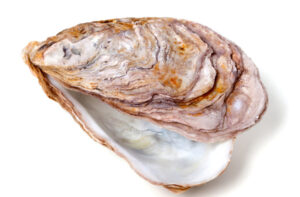Researchers have developed a novel glass-ionomer cement (GIC) for dental fillings that incorporates recycled oyster shells. GICs are widely used in dentistry, but they often have poor mechanical properties. By adding calcium oxide derived from oyster shells, the researchers have created a GIC with significantly improved strength, flexibility, and durability. This cost-effective and environmentally-friendly approach could revolutionize dental care and reduce waste.

Improving Dental Fillings with Oyster Shells
Glass-ionomer cements (GICs) are a popular choice for dental fillings, but they have a major drawback – their mechanical properties are relatively poor, limiting their use in high-pressure areas of the mouth. To address this, a team of researchers set out to develop a new and improved GIC using a surprising ingredient: recycled oyster shells.
Oyster shells are a readily available natural waste product, composed primarily of calcium carbonate with very few impurities. The researchers processed the oyster shells to extract calcium oxide (CaO), which they then incorporated into a specific glass composition containing silica, phosphorus pentoxide, aluminum oxide, calcium fluoride, and sodium fluoride.
Increased Strength and Durability
The researchers found that adding CaO from oyster shells significantly improved the physical and mechanical properties of the GIC. Compared to a commercial control sample, the GIC with 20% CaO showed:
– 54% higher bending strength (54.121 MPa vs 35.112 MPa)
– 62% higher tensile strength (10.154 MPa vs 6.257 MPa)
– 38% lower water solubility (32.54 μg/mm³ vs 52.73 μg/mm³)
These improvements are attributed to the CaO strengthening the glass network, reducing the dissolution rate, and enhancing the adhesion between the powder and liquid components of the GIC.
Eco-friendly and Cost-effective Solution
The use of recycled oyster shells as a source of CaO makes this GIC an environmentally-friendly and cost-effective solution for dental fillings. Oyster shells are a readily available waste product, and the processing required to extract the CaO is relatively simple and inexpensive.
Furthermore, the improved mechanical properties of the GIC mean it can be used in a wider range of dental applications, including high-pressure areas of the mouth. This could lead to longer-lasting fillings and a reduced need for costly dental procedures in the future.
Towards Better Dental Care
The development of this novel GIC with recycled oyster shells is an exciting step towards improving dental care. By enhancing the strength and durability of dental fillings, this research could help reduce the prevalence of tooth decay and the need for costly dental treatments.
As the researchers continue to refine and test this new material, it holds great promise for transforming the way we approach dental care, while also reducing the environmental impact of the industry.
Author credit: This article is based on research by Kifayah K. Thbayh, Rafid M. AlBadr, Kareema M. Ziadan, Dalal K. Thbayh, Shaimma M. Mohi, Béla Fiser.
For More Related Articles Click Here
